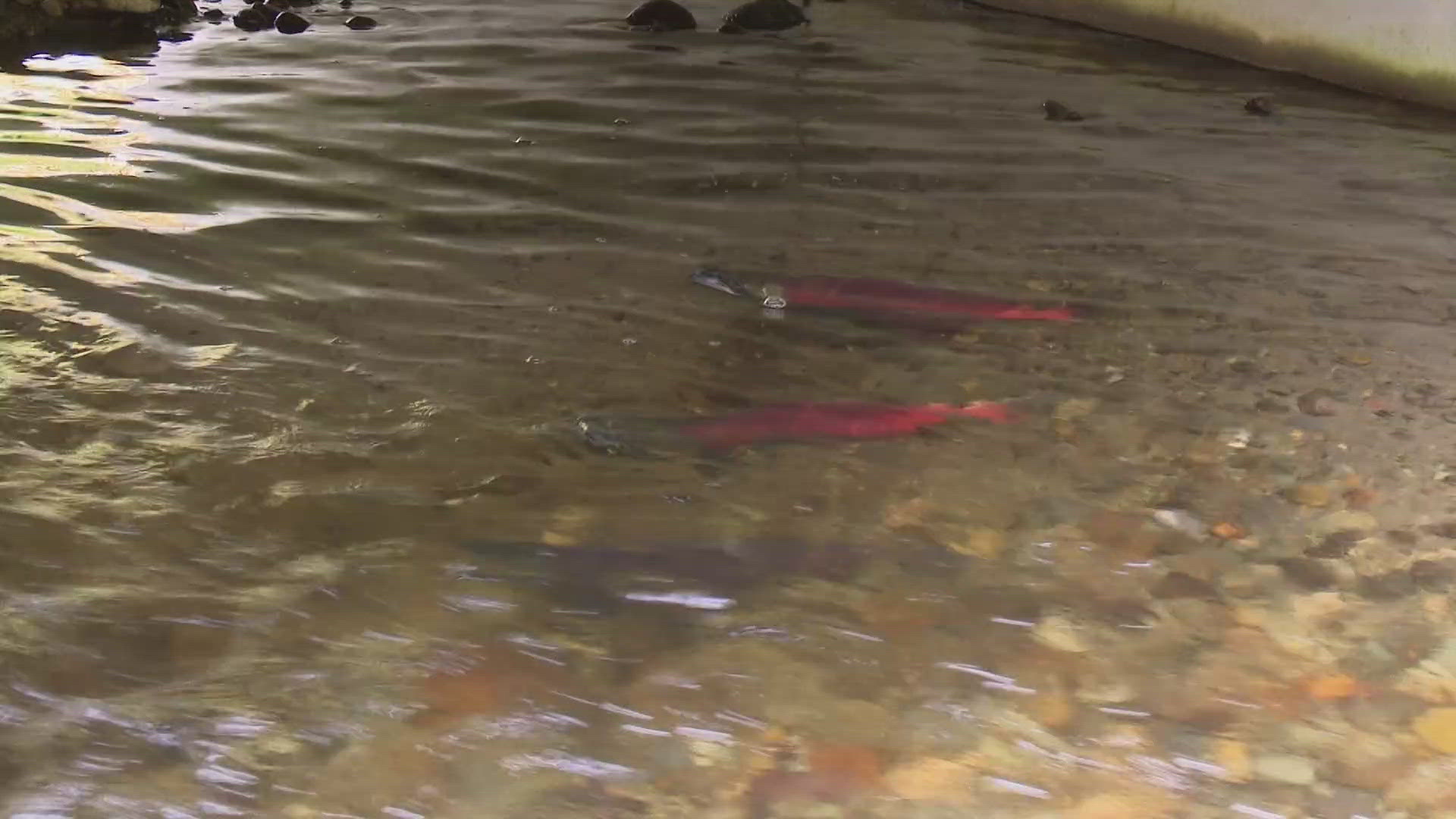KING COUNTY, Wash. — Experts are sharing positive environmental news about the big return of kokanee salmon in King County. After being on the brink of extinction, biologists said this type of salmon has rebounded in the Lake Sammamish watershed with some of the biggest numbers in nearly a decade.
"It's inspiring to see them. It means we're doing the right things," said Alison Agness, the King County kokanee recovery manager.
More than 6,800 adult kokanee salmon have returned to Lake Sammamish this year, a surge that hasn't been seen in years. "A couple of years ago, if we were all standing here, you'd be lucky to see a fish," said Agness.
Kokanee salmon are freshwater sockeye salmon that don't migrate to the ocean. The county said that over the past eight years, an average of less than 400 kokanee have returned to their spawning grounds, with an all-time low of 19 in 2018. That's when the county enacted emergency actions to keep this species alive.
"Those actions were to develop a conservation hatchery program as well as habitat conservation efforts, including removing passage barriers," said Agness.
The county has installed five box culverts in streams that flow into Lake Sammamish. It has also been releasing fry from the hatchery into the lake since 2018, which has helped with the recent increase.
"I'm very appreciative to the county and how much time they've spent,” said Sabeqwa de los Angeles, a member of the Snoqualmie Indian Tribe. “Not only just working for the kokanee salmon but talking about the kokanee salmon." She said the 'little red fish’ are very significant in her tribe. "Represent togetherness, and a feeling of family and a feeling of home to a lot of Snoqualmie tribal members."
We're just halfway through the spawning season, and the county is optimistic about this species' future.
"Keep working to address the threats to these species, so I do have hope that we will continue to see strong returns," said Agness.

